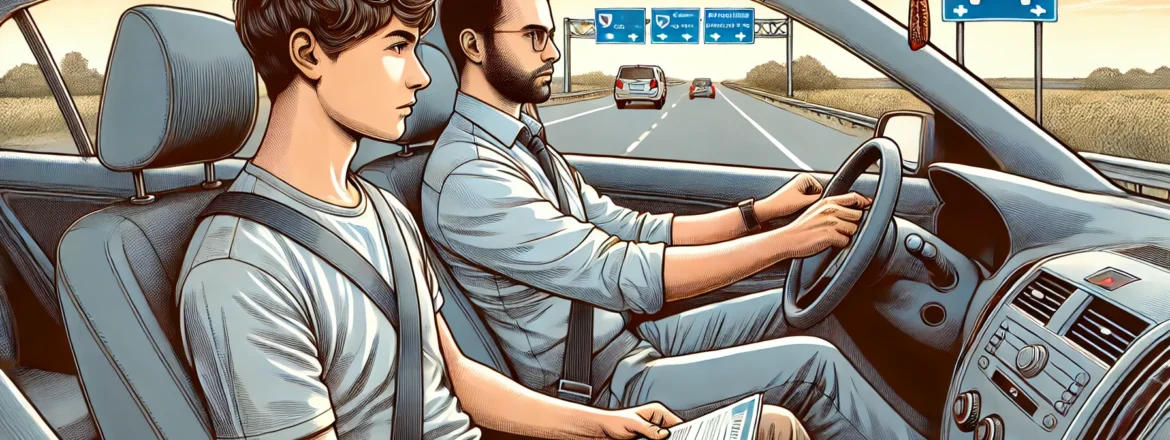Learning to drive is an exciting milestone, but a common question arises for most learners: “How many driving lessons do I need to pass my test?” The answer depends on several factors, including your experience, confidence level, and the quality of your driving instruction. This guide will help you understand the variables involved and estimate how many lessons you might need.
Table of Contents
- Factors That Affect the Number of Driving Lessons Needed
- Average Number of Lessons for New Drivers
- Tips to Speed Up Your Learning Process
- The Role of Professional Driving Schools
- Manual vs. Automatic Lessons: Does It Make a Difference?
- Frequently Asked Questions
Factors That Affect the Number of Driving Lessons Needed
The number of lessons required varies depending on several factors:
1. Experience Level
- Beginner Drivers: Will likely need more lessons as they start from scratch.
- Drivers With Some Experience: May require fewer lessons, especially if they’ve practiced with family or friends.
2. Confidence and Anxiety
Nervous learners may take more lessons to build confidence, while naturally confident drivers might progress faster.
3. Driving Environment
Learning in busy urban areas requires mastering complex road systems, which can take more time compared to smaller towns or rural areas.
4. Frequency of Lessons
Regular lessons (at least once or twice a week) help learners retain skills better, reducing the total number of lessons needed.
5. Instructor Quality
Professional and patient instructors, such as those at iDriving School, can make the learning process smoother and faster.
Average Number of Lessons for New Drivers
The average number of lessons required can provide a helpful benchmark:
1. Beginners
Most beginners need about 20–25 hours of professional instruction combined with private practice to feel test-ready.
2. With Private Practice
Learners who practice outside of lessons may reduce their required professional instruction to around 15–20 hours.
3. Without Private Practice
If you rely solely on professional lessons, expect to need around 30–40 hours to pass your test confidently.
4. K53 Standard in South Africa
In South Africa, passing the K53 test requires mastering precise driving techniques, which might require additional hours for some learners.
Tips to Speed Up Your Learning Process
1. Practice Consistently
Practice driving as often as possible between lessons to reinforce what you’ve learned.
2. Choose the Right Instructor
Pick an instructor who matches your learning style and provides constructive feedback.
3. Focus on Weak Areas
Spend extra time improving your weak spots, like parking or highway driving.
4. Use Study Resources
Study the K53 book and take mock tests to prepare for the theoretical exam and driving maneuvers.
5. Stay Relaxed
Anxiety can slow your progress. Practice relaxation techniques to stay calm during lessons.
The Role of Professional Driving Schools
Enrolling in a reputable driving school is one of the best ways to ensure efficient learning. Professional schools like iDriving School offer:
1. Structured Lessons
Each lesson is designed to cover specific skills, ensuring steady progress.
2. Patient Instructors
Experienced instructors can tailor lessons to your pace and needs, reducing unnecessary repetitions.
3. Focus on Road Safety
Professional lessons emphasize defensive driving and road safety, skills that are crucial for passing your test and becoming a responsible driver.
Manual vs. Automatic Lessons: Does It Make a Difference?
The type of vehicle you learn in can influence the number of lessons you need:
1. Manual Cars
- Learning to drive a manual car is more complex due to clutch control and gear shifting.
- Expect to need additional lessons, especially if you’re new to driving.
2. Automatic Cars
- Automatic cars are easier to learn, often requiring fewer lessons.
- However, keep in mind that an automatic driver’s license restricts you from driving manual cars in the future.
Frequently Asked Questions
1. How many lessons are required for a Code 8 driver’s licence?
On average, most learners need about 20–30 hours of lessons to master the skills required for a Code 8 driver’s licence.
2. Is private practice necessary?
Private practice isn’t mandatory, but it helps you gain more experience and reduce the total number of professional lessons.
3. Can I pass with fewer lessons?
It’s possible if you practice regularly and learn quickly. However, rushing the process might leave you underprepared.
4. How do I know I’m ready for the test?
Your instructor will usually advise you when you’re ready based on your consistency and ability to handle various driving scenarios.
5. What if I fail my test?
Don’t worry—failing is part of the learning process. Identify your weak areas and focus on improving them before retaking the test.
Final Thoughts
The number of driving lessons you need depends on your unique learning pace and circumstances. While the averages above provide a general idea, working with a skilled instructor and practicing regularly will help you reach test readiness sooner. Remember, patience and persistence are key to mastering the art of driving.


